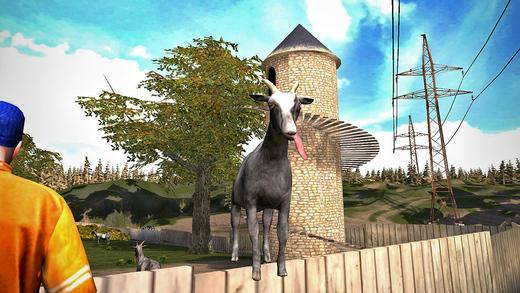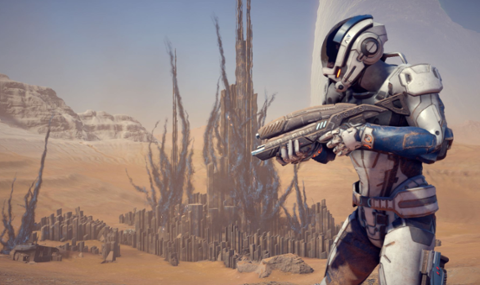'Win Over the Most Dedicated Gamers First, and the Rest Will Follow'
To find out how developers decide just who they’re making games for, we contacted the makers of Goat Simulator, one of the biggest sensations in casual gaming. We also spoke with the founder of Wastelands Interactive, a studio that makes strategy games for serious gamers. In both cases, the developers suggest the best strategy is to make games they’re passionate about.Upload Your ResumeEmployers want candidates like you. Upload your resume. Show them you're awesome.
Survival of the Fittest
Despite Goat Simulator’s success, Ibrisagic believes “it's probably harder to reach casual gamers [than hard-core gamers] today. There's just so much on the app stores and it's very hard to break through the noise.” Statistics back him up. A survey of 10,000 mobile application developers by Developer Economics found that “games dominate app store revenues, yet most games developers struggle. Some 33 percent of developers make games, but 57 percent of those games make less than $500 per month.” The report added that: “Revenue distribution is so heavily skewed towards the top that just 1.6 percent of developers make multiples of the other 98.4 percent combined.” Many developers don’t make enough to cover basic costs for a desktop to develop on and mobile devices on which to test apps. Costs can be huge: “The most successful free app developers have hundreds of employees and tweak every single small detail of their game,” Ibrisagic noted. But even the biggest successes aren’t always sustainable. Farmville creator Zynga has been in a freefall, and Angry Birds maker Rovio recently cut 130 jobs because of falling profits. Wastelands Interactive in Poland has built a sustainable business making hardcore games. Founder Leszek Lisowski has 15 people working for him as they develop their seventh game, Worlds of Magic, a turn-based 4X (eXplore, eXpand, eXploit, and eXterminate) strategy title: PC gamers expect higher quality and a longer-lasting experience than people who play casual games on phones and tablets, Lisowski said. “I know there are folks who play [our games for] 300 or 500 hours… 50 hours is the minimum time you can spend with the games without playing the same thing [twice].” Lisowski began developing games when he realized that playing and modding them wasn’t enough. He still chooses which games to create based on “what I love to make,” he said. “Let’s say 90 percent of what I love and 10 percent what I think will allow us to pay the bills.” Lisowski knows his audience. A strategy game that combines World War II, U.S. troops, and German tanks “will sell for sure,” he said. One game his studio didn’t make a lot of money on was Fall Weiss, set during the Invasion of Poland during World War II. But Lisowski said, “I believe it was worth it,” because the game “was kind of a tribute for our grandfathers.”
PC gamers expect higher quality and a longer-lasting experience than people who play casual games on phones and tablets, Lisowski said. “I know there are folks who play [our games for] 300 or 500 hours… 50 hours is the minimum time you can spend with the games without playing the same thing [twice].” Lisowski began developing games when he realized that playing and modding them wasn’t enough. He still chooses which games to create based on “what I love to make,” he said. “Let’s say 90 percent of what I love and 10 percent what I think will allow us to pay the bills.” Lisowski knows his audience. A strategy game that combines World War II, U.S. troops, and German tanks “will sell for sure,” he said. One game his studio didn’t make a lot of money on was Fall Weiss, set during the Invasion of Poland during World War II. But Lisowski said, “I believe it was worth it,” because the game “was kind of a tribute for our grandfathers.”
Bringing Hardcore Games to Mobile Devices
Just because Lisowski’s games appeal to hard-core gamers doesn’t mean he’s ignoring mobile devices. Worlds of Magic, which is available on PCs in an early-access form for $40, should hit iPads and Android tablets in mid-2015. But it won’t be for what we usually think of as “casual” gamers. “We realized that a lot of people who previously played on PC are switching to mobile devices, but they still want titles of similar quality,” Lisowski said. Turn-based games often translate well from PCs and consoles to touch-based devices because they require good decision-making rather than precision and timing. “I think for us the mobile revolution is a great thing,” Lisowski said. “We don’t expect to sell a million copies of those games, but we know that war games, strategy games of good quality and with good gameplay can sell 50,000 copies on the iPad for $10 or $20.” Serious gamers want to play for many hours and “are willing to pay more than the average,” he added. “We are not planning to make games for the crowds because they are not for the crowds. We’re not competing with the free games. That would be a mistake.”Related Articles
- How Game Developers Turn Kickstarter Failure Into Success
- The Trials and Triumphs of Creating Your Own Game Studio
- The Quest to Build Xbox One and PS4 Emulators


